Map of Italy
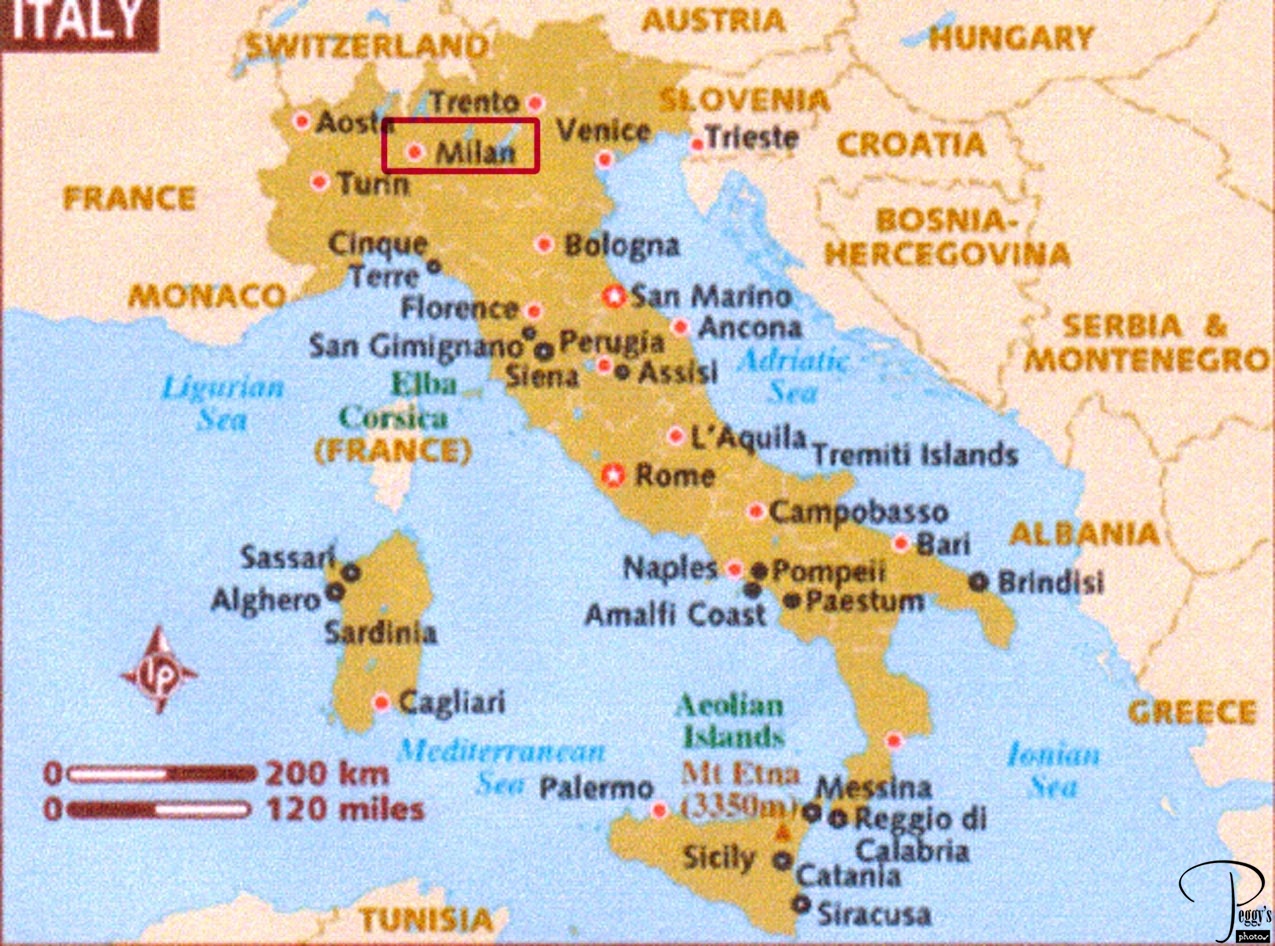
Many decisions on this trip were based on my embarking on it with a very sore foot. About 2 weeks before this trip, while gardening, I slipped on geranium plants overhanging a low wall, twisted my foot, and landed on my tailbone onto my cement driveway. Miraculously, my tailbone stopped hurting the day I left and I was once again able to easily get up and then back down from a sitting position, but my foot still ached and was weak. So I took many taxi rides when the cheaper metro trains would also have gotten me from one place to another and didn’t go to some places I would have otherwise. On Thursday, the Super Shuttle came at 6:45 a.m. to pick me up for my 10:00 a.m. flight from Los Angeles. We picked up another passenger on the way to the airport and then headed south down the Pasadena Freeway. It was jammed, so the shuttle driver became inventive and got off on the Santa Ana Freeway turnoff and then proceeded to get lost. We ended up 1/2 hour later now going south on the Pasadena Freeway almost at the place where we had gotten off. But the driver did get me to the airport on time. United booked me on one of their “see the airports of the world” flights reserved for Mileage Plus members who book late using their saved–up miles: I was to fly from Los Angeles to San Francisco to London to Frankfurt to Milan. At LAX, I was told that I would only be allowed one carry–on bag, which would include a handbag, since I was flying through London, so I had to quickly unpack some of the things in what I wanted to carry–on and put them in my already overloaded handbag. At Heathrow, I had a 5–hour layover, which actually I was glad of as it gave me enough time to walk from the international terminal to the European terminal slowly and time to decompress. I also wanted to have my first cup of European coffee there and went up the escalator to the coffee bar, which was so packed, as it was early morning, that I went right down on the escalator and slipped on it. I asked myself then if I really should have gone on this trip––too late to get out of it now. Next to Frankfurt airport, where I met my son Keith and we flew to Milan together (not planned but United had put us on the same Lufthansa flight to Milan). He had a convention to attend in Milan and thought it would be fun to have me along––I agreed. We took the bus from Milan’s Malpensa Airport to the Central Station (Stazione Centrale)––about a 50–minute trip. At the station, we were greeted by hundreds of riot police and numerous paddy wagons––What was going on? I thought it could have something to do with a soccer match, remembering the time when this happened elsewhere in Italy on my Trafalgar tour, and our taxi driver to our hotel confirmed that the hooligan fans for an opposing soccer team were about to arrive at the station. We stayed at the Westin Milan Palace, a very nice hotel on the Piazza della Republica, not far from the Central Station. We arrived about 7 p.m. Friday evening, which made my trip from my home to the hotel one of about 28 hours. Keith was in charge of what restaurants we would eat at and he asked the concierge for a recommendation. We walked to a small delightful one where Keith had octopus and salt–crusted sea bass. I had risotto Milanese, a Milan specialty. It was a very nice way to end the long trip here. Milan is circled on this map of Italy.

Map of Italy
Castello Sforzesco
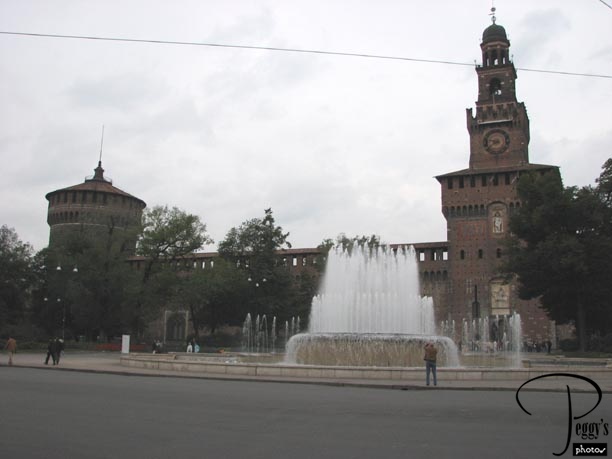
This was my third trip to Milan. The first was with my parents when I was 19, when I remember seeing the Duomo and The Last Supper. The second was with a Trafalgar tour in April 2005, when I again saw the Duomo and also the Castello Sforzesco and the Galleria. Even though I was already in Milan twice, I really enjoyed being back and liked the familiar feeling you get when you return somewhere (I have already put many photos of Milan on my old website; they will be transferred to this new site in the near future, so if you want to see more photos of Milan than I am putting on now, please look for them later). I also just enjoyed being in Italy again and hearing all the buon giornos. My theory of how to get rid of jet lag as quickly as possible (Milan time was 9 hours ahead of LA time) is to start out early in the morning on your first full day in Europe. So, after a buffet breakfast at the hotel, we took the metro to the Duomo station (I used the safer stairs than the now–feared escalator) and then to the Castello station to join a Zani Viaggi one–half day Milan sightseeing tour. In 2005, I took part of this metro trip and I remembered the metro stations as being quite modern and well–cared for. They are definitely showing wear. We joined our 9:30 a.m. tour by getting on the tour bus. As soon as everyone was comfortably seated, we were told to get off the bus as we were going to walk the short distance over to the Castello Sforzesco, shown in the photo.

Castello Sforzesco
Castello Sforzesco
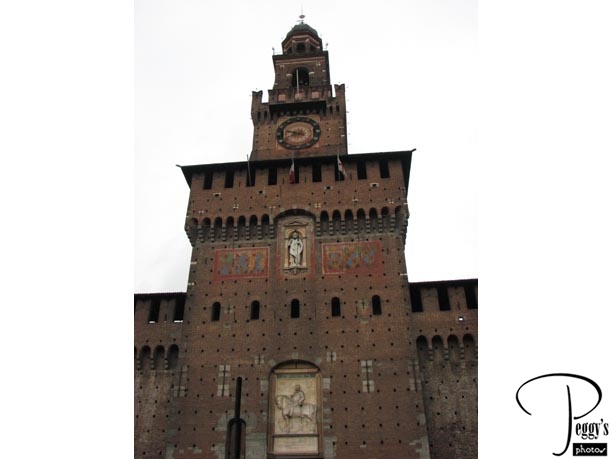
We were given a short tour of the Castello Sforzesco (Sforza Castle). It was built in the late 1300s as a military fortress to guard the city of Milan. Later, it was became a Renaissance palace of the Sforza family, a very important family in Milan. The front of the castello is very impressive with its clock, a statue of St. Ambrosias, the patron of Milan, and a relief of Umberto I, the 2nd king of Italy.

Castello Sforzesco
Castello Sforzesco
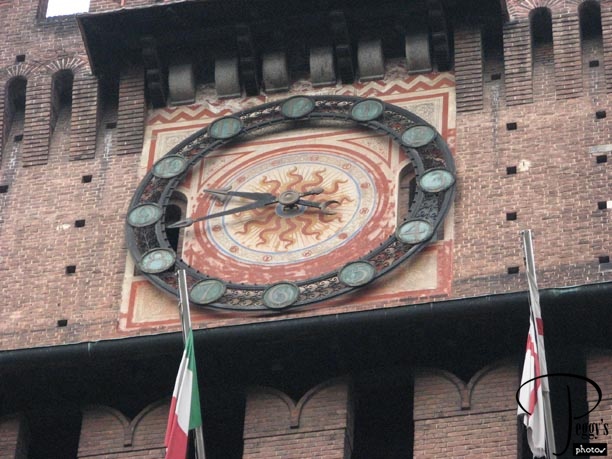
Close–up of the clock––its time is correct.

Castello Sforzesco
Castello Sforzesco
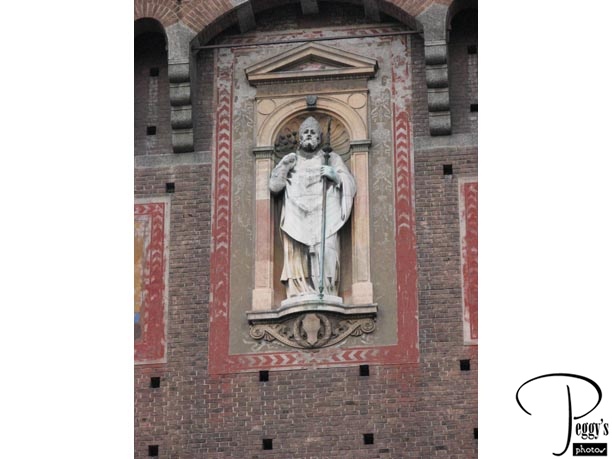
Close–up of the statue of St. Ambrosias.

Castello Sforzesco
Castello Sforzesco
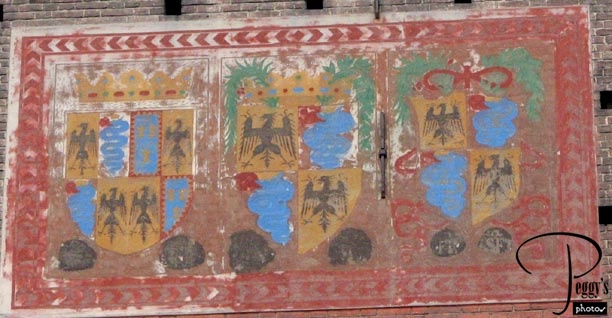
Close–up of the mural on the right of the statue of St. Ambrosias.

Castello Sforzesco
Castello Sforzesco
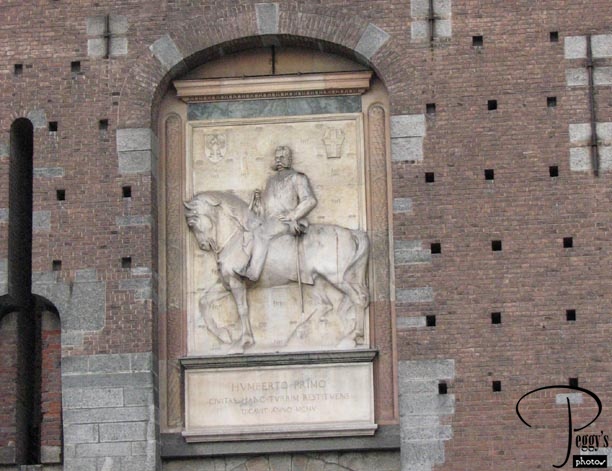
Close–up of the relief of Umbreto I.

Castello Sforzesco
Castello Sforzesco

Side of the castello. The whole complex is quite big, with turrets, passageways, and courtyards.

Castello Sforzesco
Castello Sforzesco
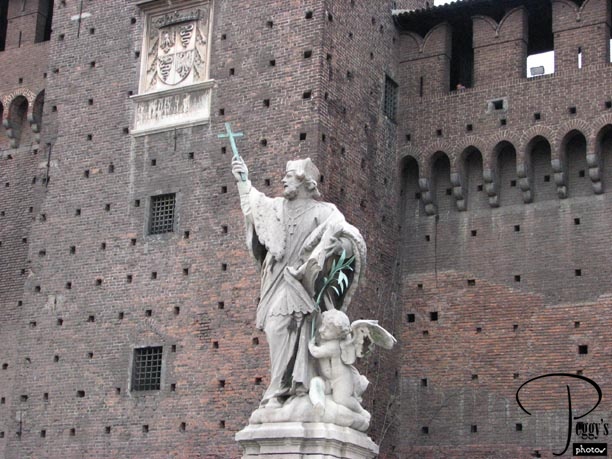
A statue inside the castello.

Castello Sforzesco
Castello Sforzesco
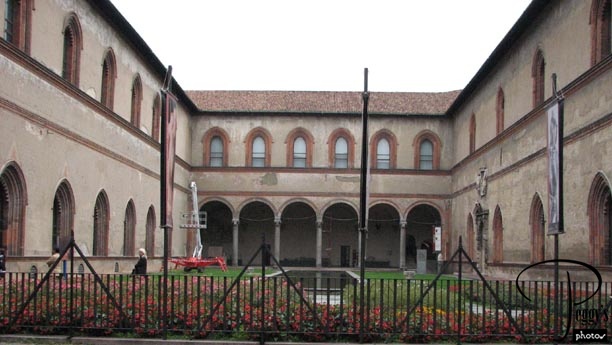
The Corte Ducale. From these photos, you can tell that the sky was overcast. It was a bit cool, but very nice as I had been told that Milan in late September can still be hot and very humid. It wasn’t.

Castello Sforzesco
Castello Sforzesco
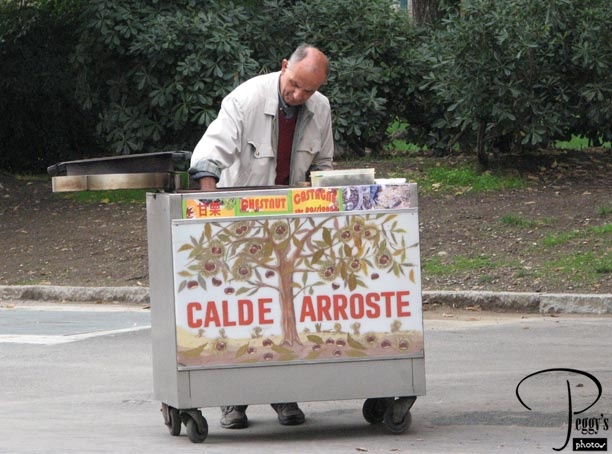
Chestnut seller outside the castello.

Castello Sforzesco
Milan Scene

We walked through the castello and then got back on the tour bus. This tour is very popular as our next stop was to be The Last Supper––this tour is one of the ways that you can get to view The Last Supper without having hard–to–get reservations. This photo was taken from the bus at the Piazzale Cadorna. A modern train station is on the right and this is where the train from the Malpensa Airport will leave you. The modern sculpture is named “Needle, Thread, & Knot.”

Milan Scene
Milan Scene
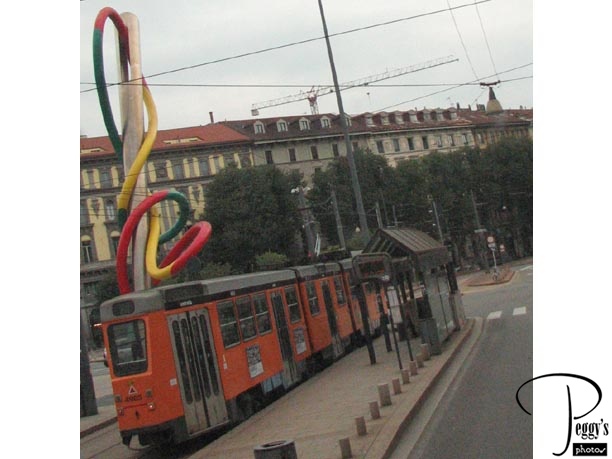
An old Milan streetcar––you see many of them around Milan along with other types of trolleys. I didn’t ride on one of these streetcars here in Milan, but did in San Francisco on their F–car line. San Francisco uses on this line a collection of streetcars from other cities around the world.

Milan Scene
Milan Scene
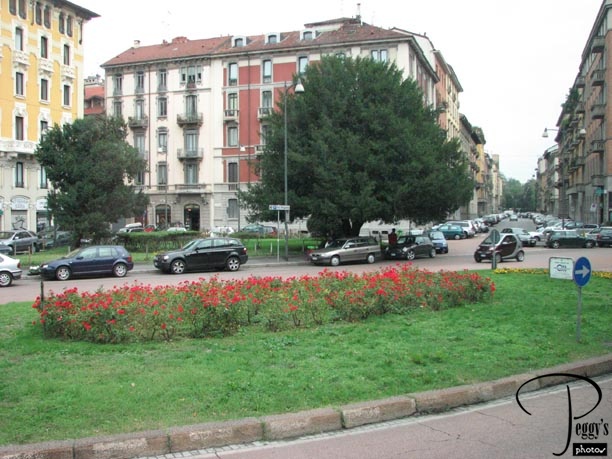
Another Milan scene taken from the bus. Milan’s architecture is mainly big and boxy and not usually very attractive. However, housing in Milan is sold at very premium prices.

Milan Scene
Milan Scene
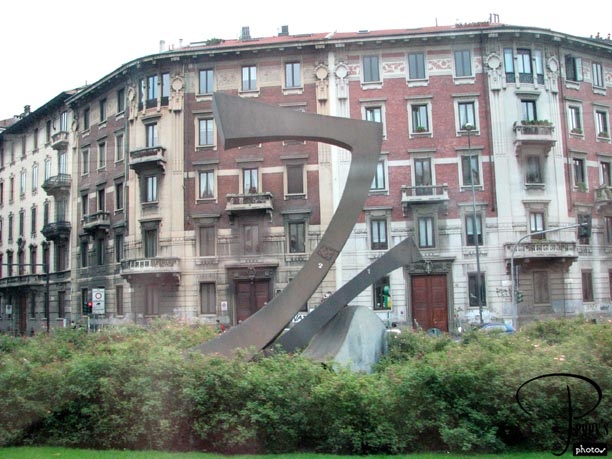
Another modern sculpture.

Milan Scene
Santa Maria delle Grazie
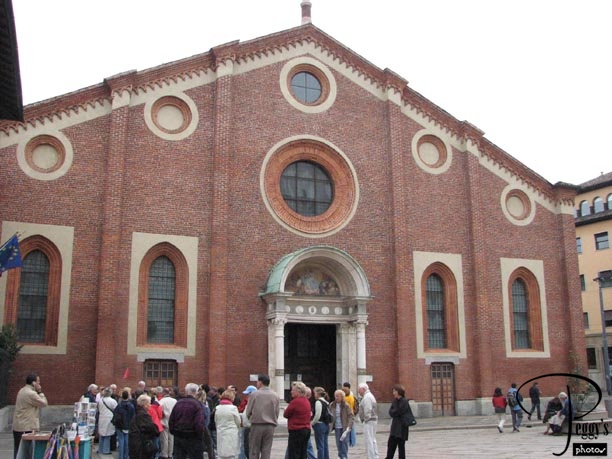
We are now at Santa Maria delle Grazie to view the Last Supper. The Gothic–Renaissance–style church itself was begun in 1463. From 1558 to 1782, it was the seat of the Court of Inquisition. It was restored in 1934–1937 and again in 1947 after it had been severely bomb–damaged in World War II. We were not given a tour of the church.

Santa Maria delle Grazie
Santa Maria delle Grazie
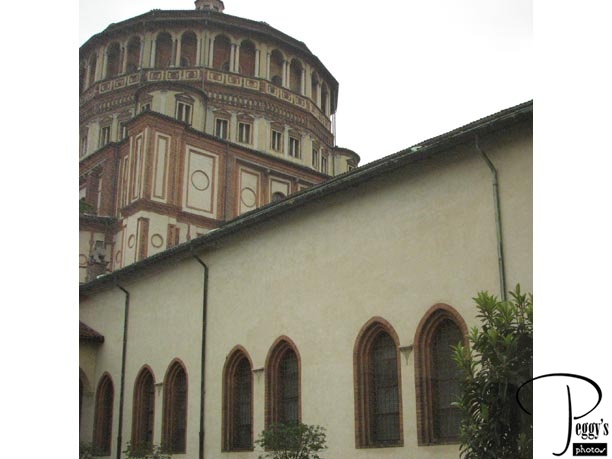
The polygonal tambour (tower) was added in 1492.

Santa Maria delle Grazie
The Last Supper
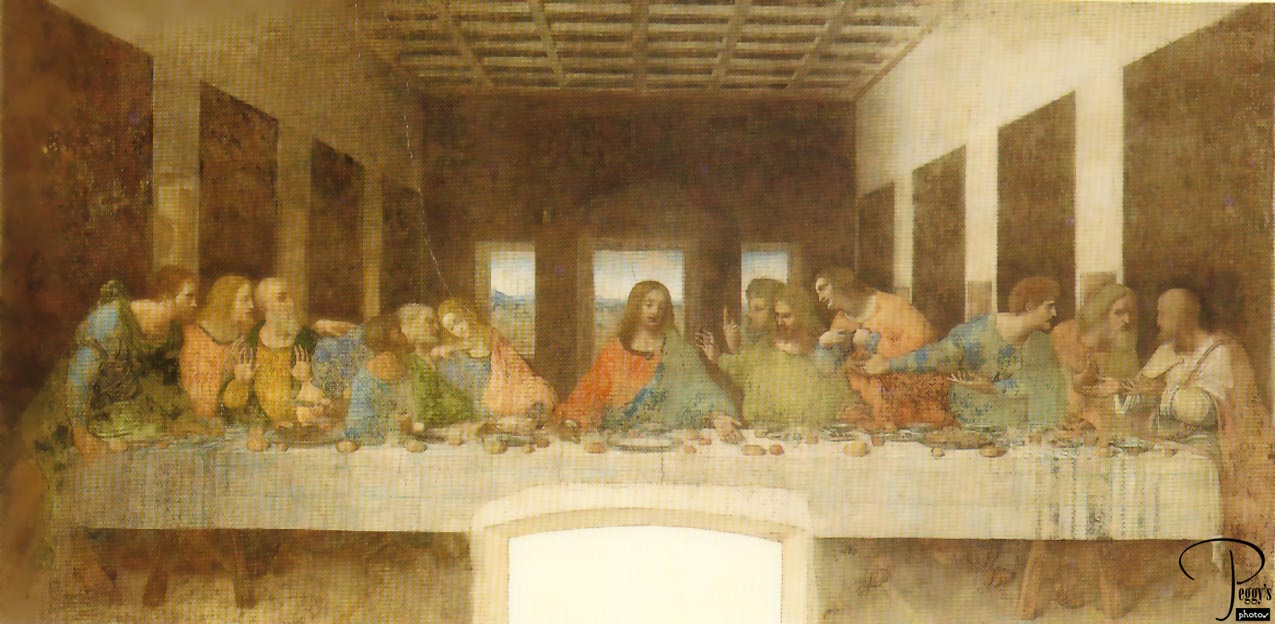
No photos were allowed of The Last Supper. We entered the room where the painting covers the full width of a wall (it measures 15 feet high by 29 feet long) through a humidity–controlled enclosure. Only 25 people are allowed in for each 15–minute viewing. I was surprised as how muted its colors were, even more muted than in this scanned postcard. Leonardo da Vinci painted The Last Supper on this dry wall (making it not a true fresco) in 1498. As early as 1518, it started to show deterioration and it has been restored a number of times. The painting represents the moment in which Jesus announces that he would be betrayed by one of His disciples. For you Da Vinci Code readers, does the figure at Jesus’ right look feminine? Yes, very definitely. However, the figure has on the same type of clothes as that of the other figures and the way Peter has his arm on the shoulder of the feminine figure does not appear to be how a man would put his arm on a woman. The feminine figure is believed to be John, who has also been portrayed in other paintings as being feminine. The painting is very very impressive. When I saw The Last Supper when I was 19, I remember a quite different experience. I remember being led through a passageway by a very short nun and then just walking by right below the painting. The nun gave us the story of the painting and also told us that it was a miracle that it was not destroyed in the bombing of the church. We were not given 15 minutes to stand in front of it. On the opposite wall of the large room, is a huge wall painting named the Crucifixion.

The Last Supper
The Last Supper
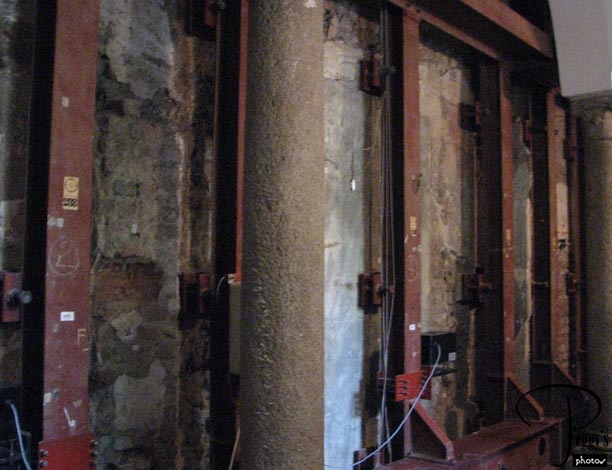
Next, we were asked if we wanted to see the back of the wall on which The Last Supper was painted. We walked through a low passageway (I think this is how we reached the painting when I was 19) to the area behind the painting. This photo shows all the reinforcements added to protect the wall. You can see that parts of the wall are deteriorating.

The Last Supper
Teatro alla Scala
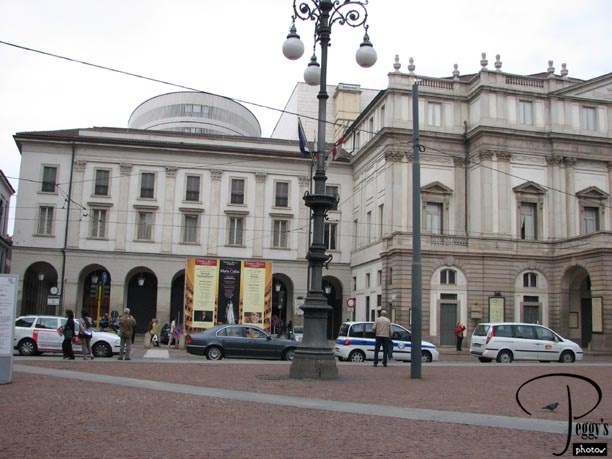
Back onto the bus to our next stop: the Teatro alla Scala (La Scala), Italy’s premier opera house. It was commissioned by Maria Theresa of Austria and opened in 1778. It has a Neo–classical exterior. I had not been inside the building before

Teatro alla Scala
Teatro alla Scala
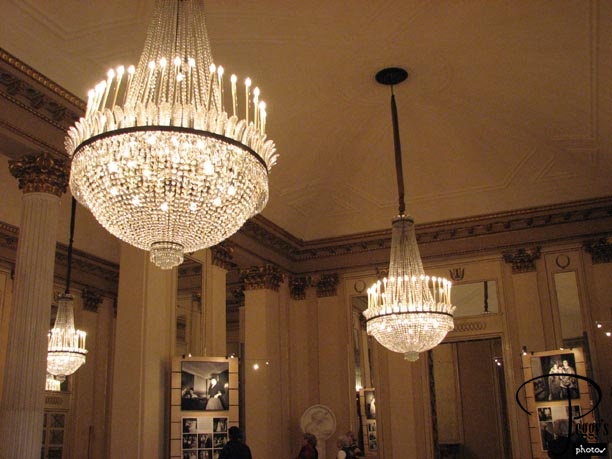
Our tour guide told us that La Scala means steps, and we climbed many steps up to the reception area. It was elegant with many candelabras.

Teatro alla Scala
Teatro alla Scala
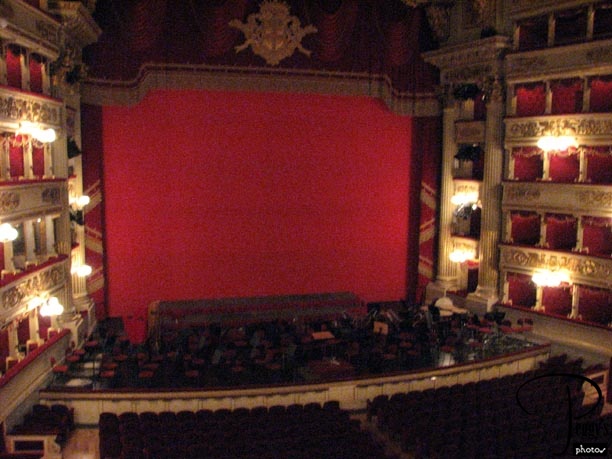
We were allowed to enter some of the theatre boxes. This photo shows the stage and some of the boxes on the sides of the stage.

Teatro alla Scala
Teatro alla Scala
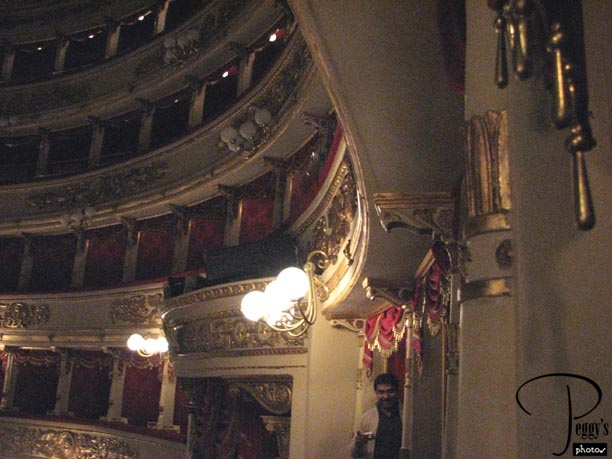
Another view from one of the boxes.

Teatro alla Scala
Teatro alla Scala
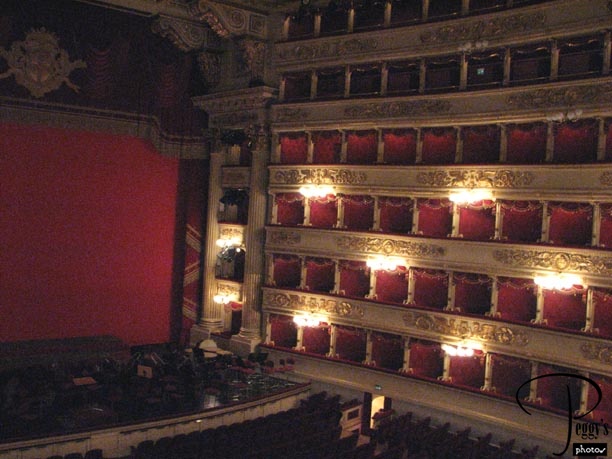
And one more view. Next we had a tour of the Museo Teatrale alla Scala which contains La Scala memorabilia. It was too warm in the museum to very much enjoy it and no photos were allowed.

Teatro alla Scala
Piazza della Scala
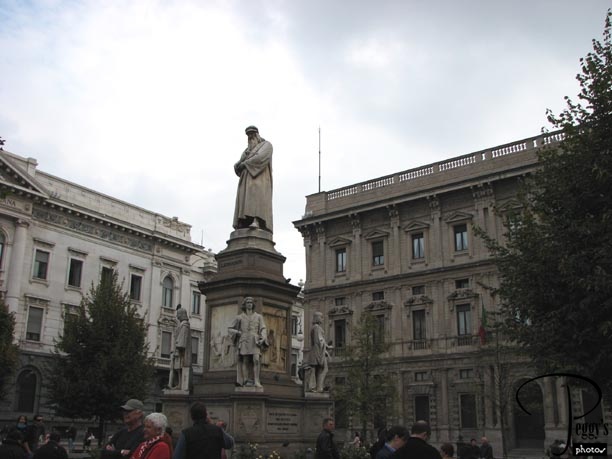
On one side of the Piazza della Scala is the Teatrale alla Scala and in the middle is this monument to Leonardo da Vinci.

Piazza della Scala
Piazza della Scala
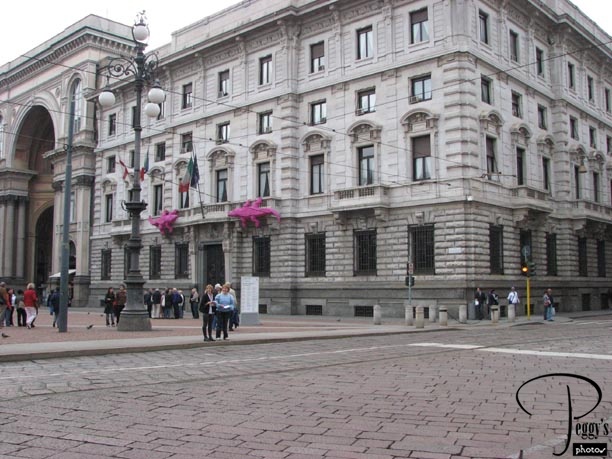
On one side of the Piazza della Scala is the Teatrale alla Scala and in the middle is this monument to Leonardo da Vinci.

Piazza della Scala
Piazza della Scala
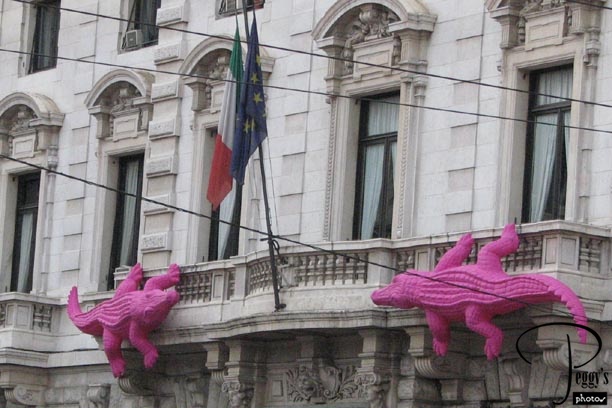
A closer view of the alligators and of the Italian and European Union flags.

Piazza della Scala
Galleria Vittorio Emanuele II
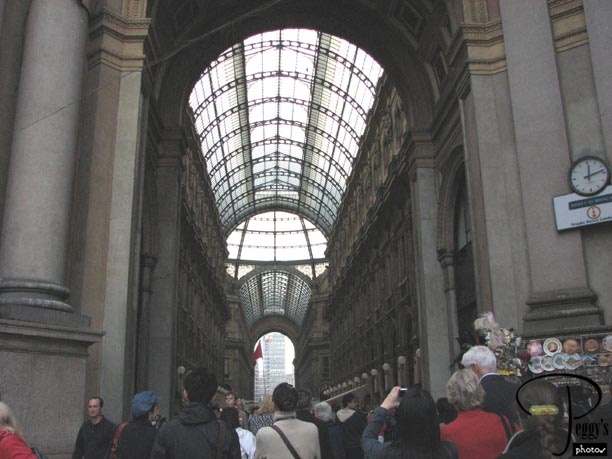
Entering the Galleria Vittorio Emanuele II. Vittorio Emanuele II was the first king of United Italy. The first stone of the galleria was laid in 1865 and it took 12 years to build. It connects the Piazza della Scala to the Piazza del Duomo. This photo is looking toward the Duomo.

Galleria Vittorio Emanuele II
Galleria Vittorio Emanuele II
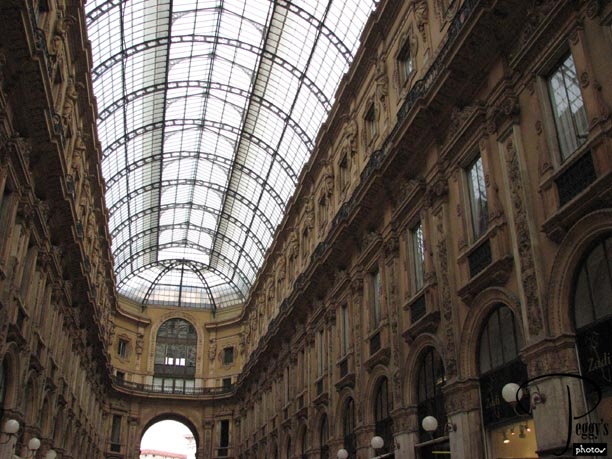
Looking back to the Piazza della Scala.

Galleria Vittorio Emanuele II
Galleria Vittorio Emanuele II
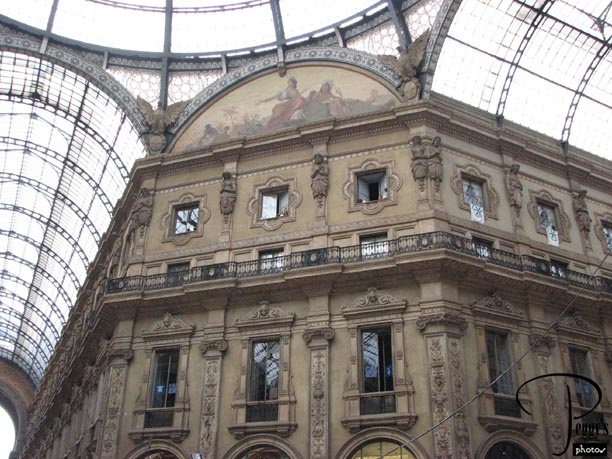
Inside the galleria.

Galleria Vittorio Emanuele II
Galleria Vittorio Emanuele II
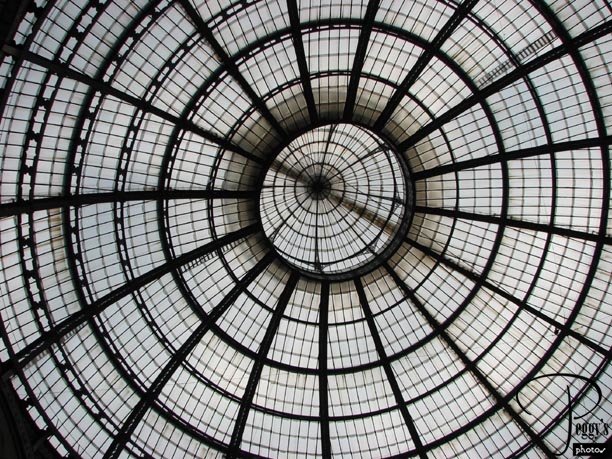
The inside of the galleria’s dome.

Galleria Vittorio Emanuele II
Galleria Vittorio Emanuele II
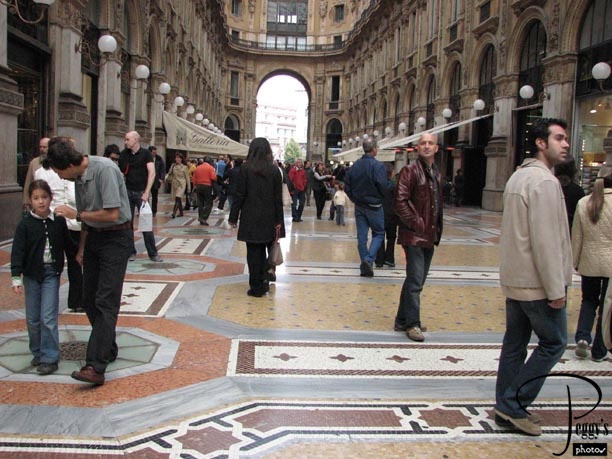
View of its elegant floor.

Galleria Vittorio Emanuele II
Galleria Vittorio Emanuele II
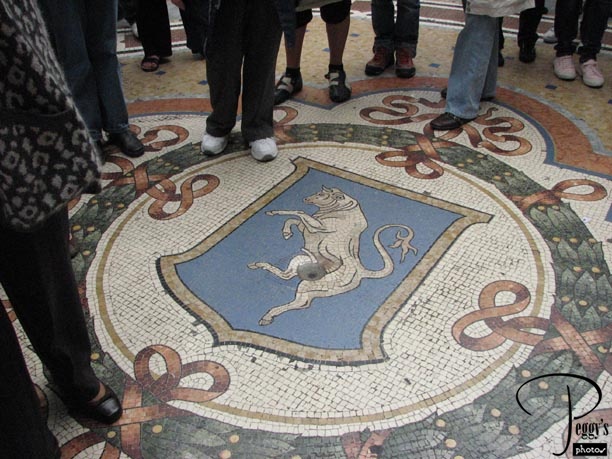
The Little Bull on the galleria floor. For good luck, place your foot on his testicles and spin around.

Galleria Vittorio Emanuele II
Galleria Vittorio Emanuele II
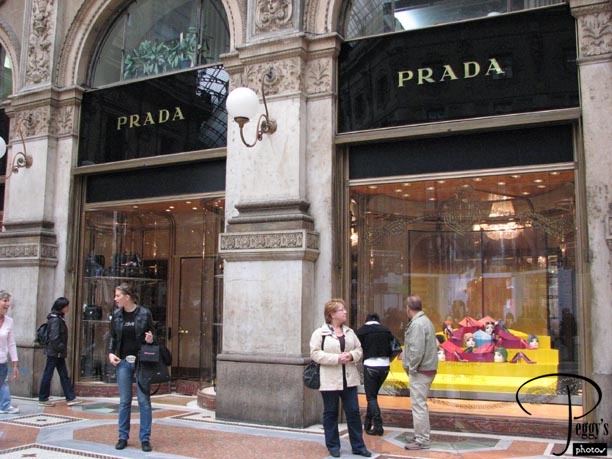
The galleria is truly elegant, with many top designer stores and restaurants, but also including such “outstanding” places to eat as McDonald’s and the Auto Grill.

Galleria Vittorio Emanuele II
Piazza del Duomo
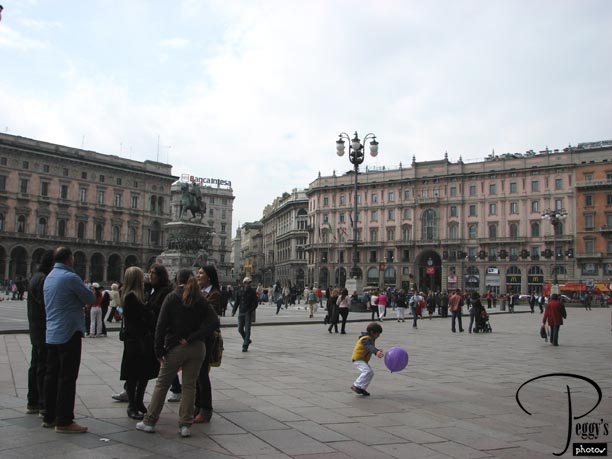
Our tour ended in the galleria and we were to continue on to the Duomo on our own. View of the Piazza del Duomo leaving the galleria. This piazza is the center of Milan life.

Piazza del Duomo
Piazza del Duomo
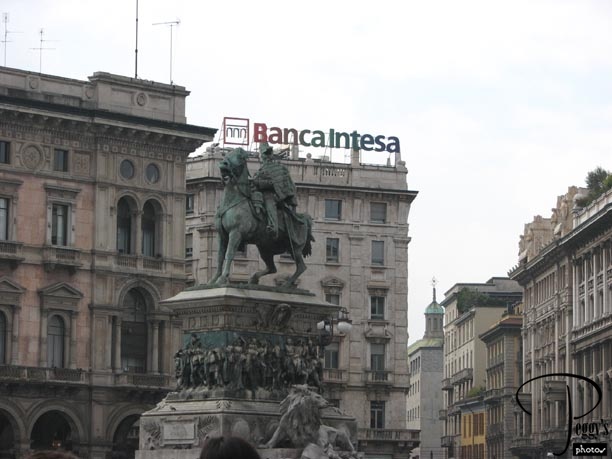
The equestrian statue of Vittorio Emanuele II in the Piazza del Duomo.

Piazza del Duomo
The Duomo
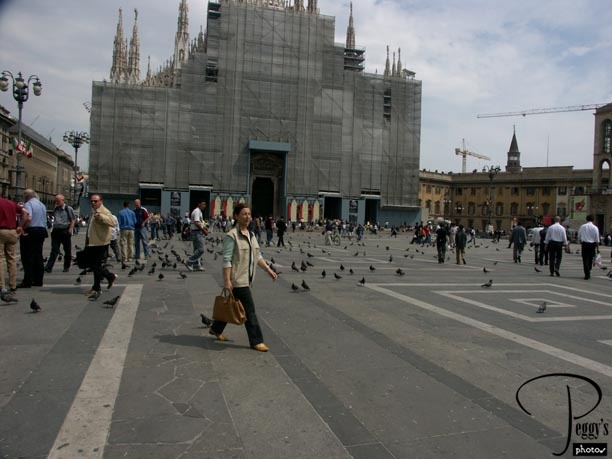
This photo is from April 2005. This is how the front of the Duomo (the cathedral) looked.

The Duomo
The Duomo
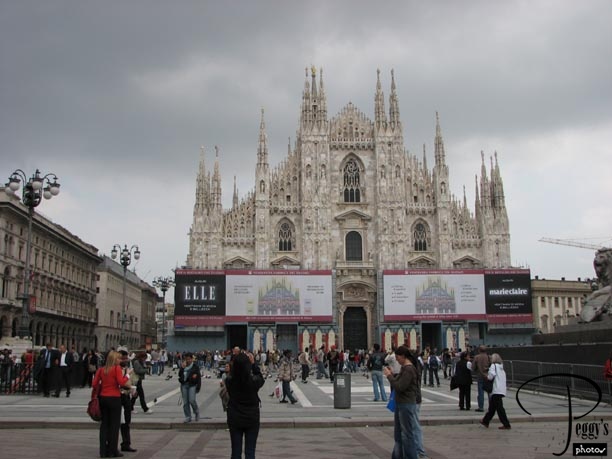
This is how it looked at the end of September 2007––quite an improvement but not quite all there yet. The Milan Duomo is the fourth largest church in Europe (after Rome’s, London’s, and Seville’s cathedrals). It was started in 1386 and is in the Flamboyant Gothic style. I think it is the most beautiful of all the cathedrals that I have seen in Europe.

The Duomo
Piazza del Duomo
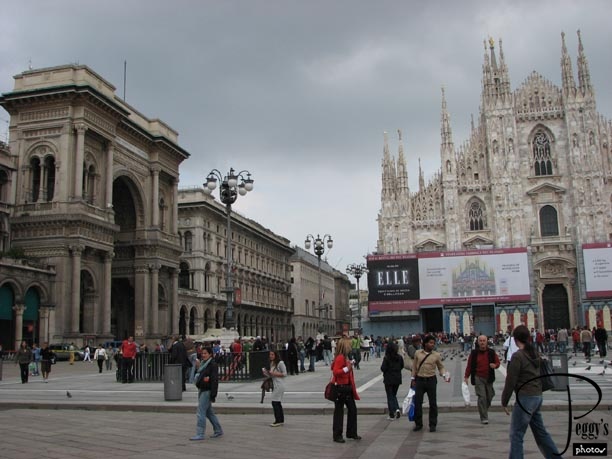
The entrance to the galleria to the left of the Duomo.

Piazza del Duomo
The Duomo
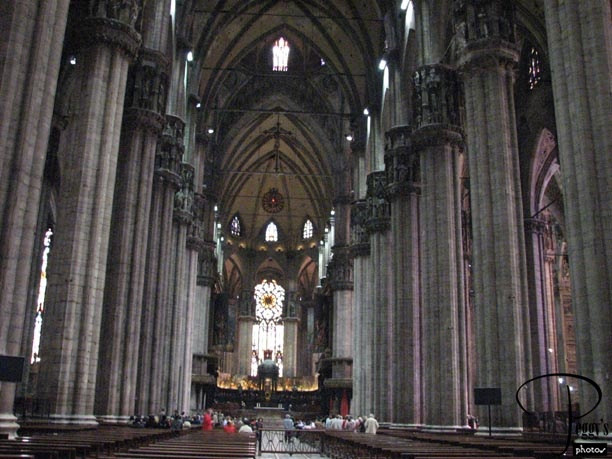
Inside the Duomo. It is kept quite dark and no flash was allowed.

The Duomo
The Duomo

The Duomo’s exquisite floor.

The Duomo
The Duomo
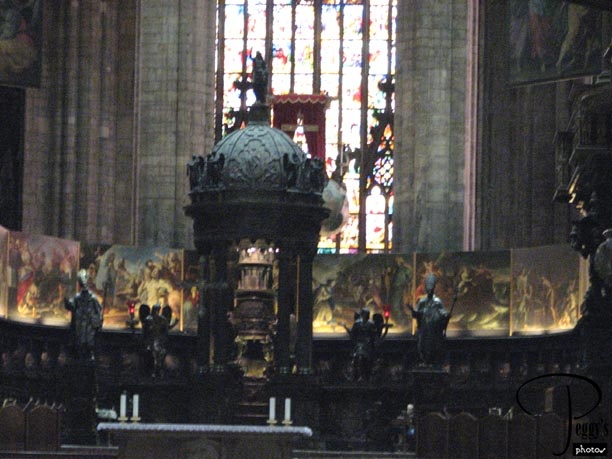
Inside the Duomo.

The Duomo
The Duomo
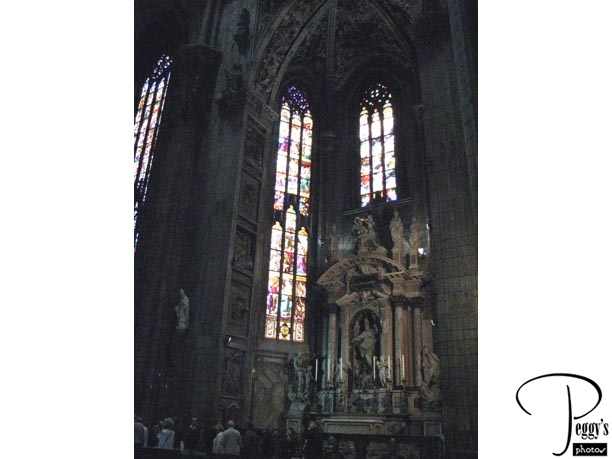
Inside the Duomo.

The Duomo
The Duomo
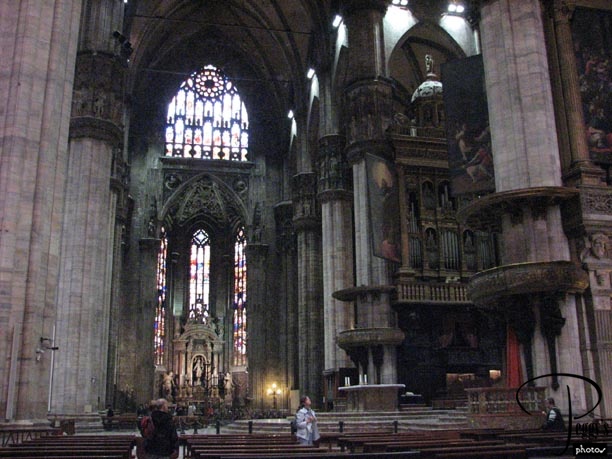
Inside the Duomo.

The Duomo
The Duomo
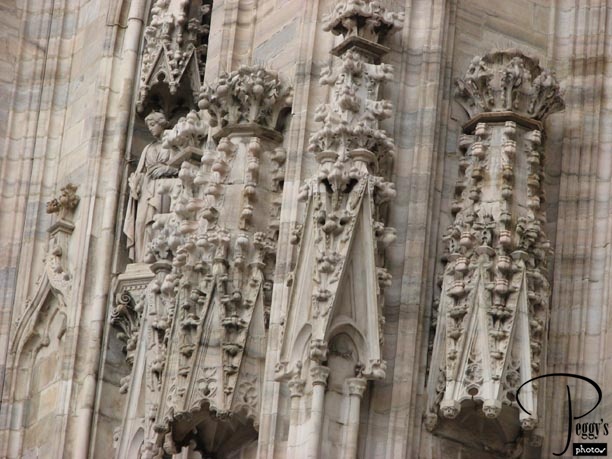
Some of the statues on the outside of the Duomo. You can take an elevator up to the outside spires for a breathtaking experience. I did that in 2005. I could not convince Keith that he should do it as well.

The Duomo
The Galleria
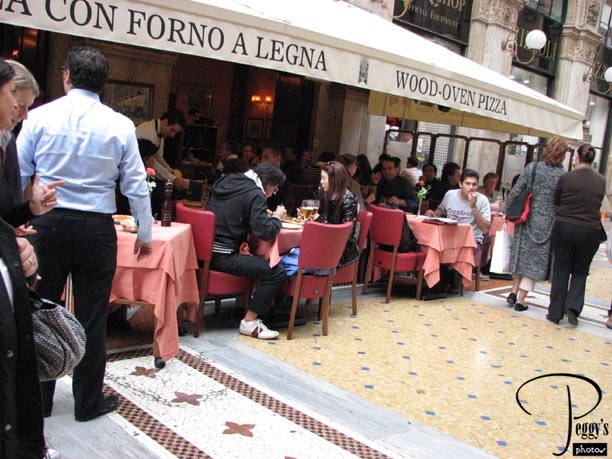
Time for lunch. I wanted to eat like a true tourist in one of the cafes inside the galleria. We couldn’t get an outside table at this cafe, so we ate inside, which actually was very nice as it was quiet here and away from all the crowds. Keith had spaghetti and I had lasagna: lasagna was 14 euros (at that time, figure that 10 euros equaled almost $14.00 U.S.); bottled water, 3 euros; and about a 6–ounce Coke Light (Diet Coke), 6 euros. You definitely pay for atmosphere, but the food prices were not that much better elsewhere in Milan. I think this is one country where a glass of wine may be less expensive than a Coke.

The Galleria
Piazza del Duomo
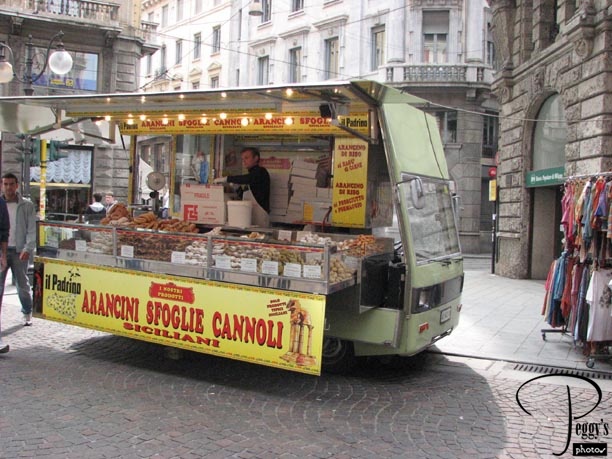
Or we could have had some cannoli from this truck and walked around with our food. There are many places in Italy where you can get walk–around food, much cheaper than eating at a restaurant, but not many places to sit to eat it.

Piazza del Duomo
Via Dante
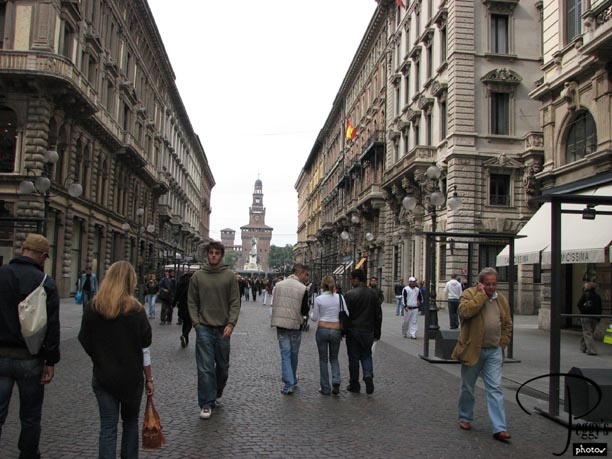
I wanted to go back to the Castello Sforzesco to visit one of its museums. We found the Via Dante, a pedestrian walkway that links the castello with the Piazza del Duomo. The Castello Sforzesco seen from the top of Via Dante.

Via Dante
Via Dante
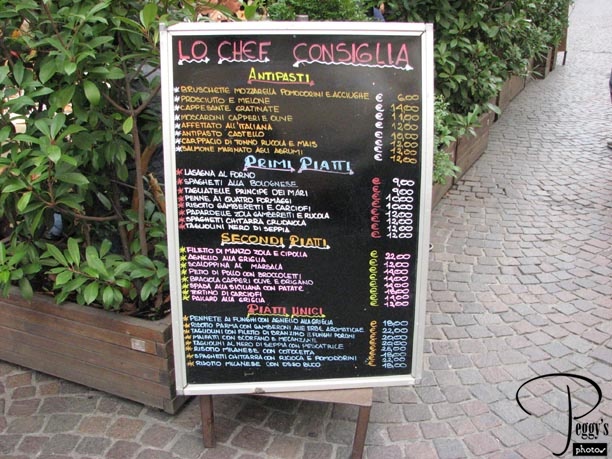
Restaurant billboard on the Via Dante. The Italian meal is usually divided into parts: antipasti, first course, second course, and then desert. You don’t have to order all the courses––just pick the ones you want.

Via Dante
Via Dante
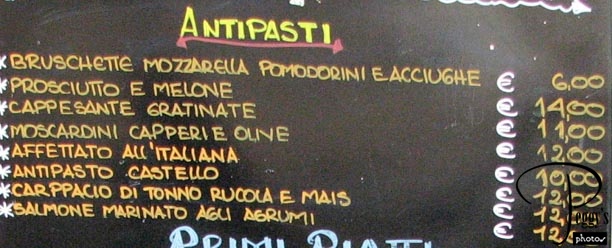
Close–up of the Antipasti offerings.

Via Dante
Via Dante

Close–up of the Primi Piatti (First Course) items.

Via Dante
Via Dante

Close of the Secondi Piatti (Second Course) items.

Via Dante
Via Dante

This restaurant also offered a Piatti Unici, which seems to be a combination of both first course and second course items. Deserts are usually on a separate menu or just given by the waiter as to what is available: most times, tiramisu and apple tart.

Via Dante
Castello Sforzesco
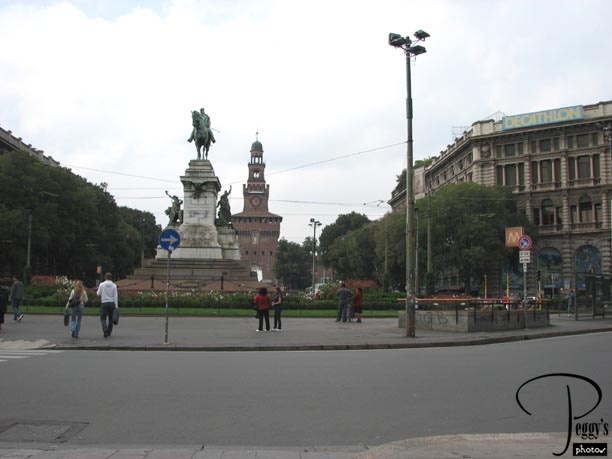
Closer–up view of the Castello Sforzesco with a statue of Giuseppe Garibaldi, an Italian national hero (1807–1882), who led many of the military campaigns that led to the formation of a united Italy.

Castello Sforzesco
Castello Sforzesco
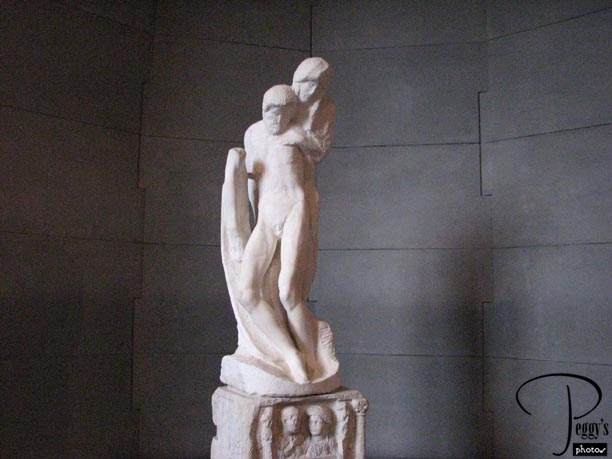
In the castello’s Museum of Ancient Art is Michelangelo’s Rodanimi Pieta. He died before he finished this statue and actually was in the process of reworking it. This is what I had come back to the castello to see as I missed seeing it when I was here in 2005.

Castello Sforzesco
Castello Sforzesco
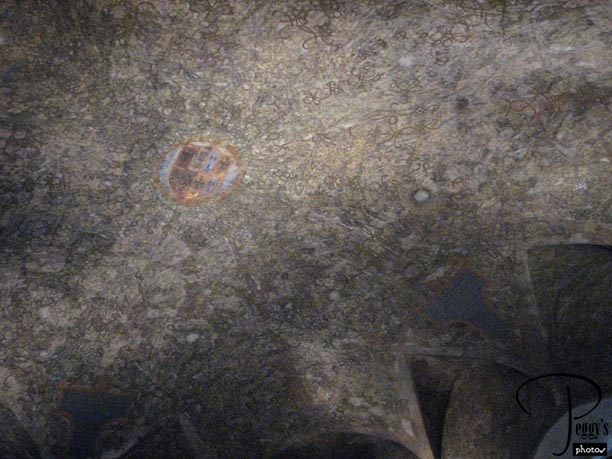
Close up of the Leonardo da Vinci ceiling.

Castello Sforzesco
Castello Sforzesco
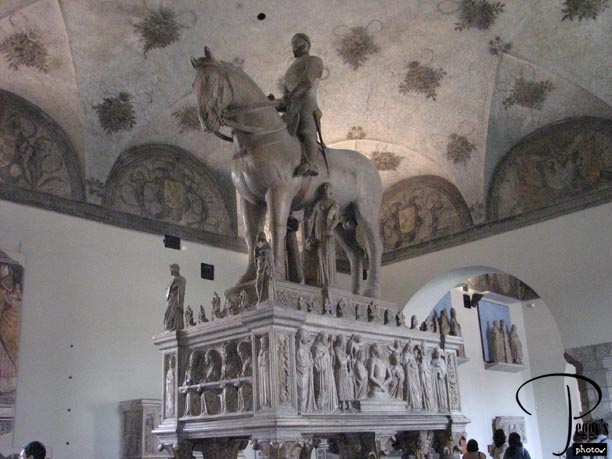
There were also other items of interest in this museum, such as the statue shown in this photo. However, I think Keith and I had enough sightseeing for the day. We did have some time for coffee at a nearby cafe. Keith was trying to figure out how to order a full cup of regular coffee in Italy––one with some milk in it (no cream or half and half here). We ended up ordering cafe latte––don’t, it is mostly latte (milk). I stuck to cafe Americano (expresso with water) after that. I also had an ice cream sundae here (they do not call them gelato sundaes). The sundaes in Italy are excellent and I had a number of them. We took a taxi rather than the metro back to our hotel––my foot was hurting and we were tired, then took a nap before heading out to dinner. Again, Keith asked the concierge for a restaurant recommendation. I wanted to take a taxi to it, but the concierge said that it would be only a 10–minute walk to the restaurant and a 1–minute ride in a taxi. I was still for taking the taxi––my foot hurt––but we decided to walk. The concierge said just to follow the trolley tracks, which we did and did and did. We thought we must have followed the wrong tracks and backtracked––the only place that was open on this very dark street was a bar with some drunks outside on its sidewalk; hence, no one really to ask for directions. We ended up at the restaurant where we had eaten the night before. They told us to go back 500 meters and then make a right and go about another 500 meters and we would find the restaurant. We did this, and if we had only first gone one more block, we would have found the restaurant on our first try. I’m a very nice mother and didn’t say a word to Keith about why didn’t we just take a taxi, but after that walk, I did need a big glass of wine, which was not too smart after all the Advil that I had taken, but on the walk back to the hotel, my foot didn’t hurt at all (but I didn’t think it would be smart to combine Advil and wine again). Anyway, the restaurant did hold the table for us and we had a very nice dinner there: Keith, salt–crusted orata and a seafood salad with octopus; me, salad, pizza, desert, and coffee.
